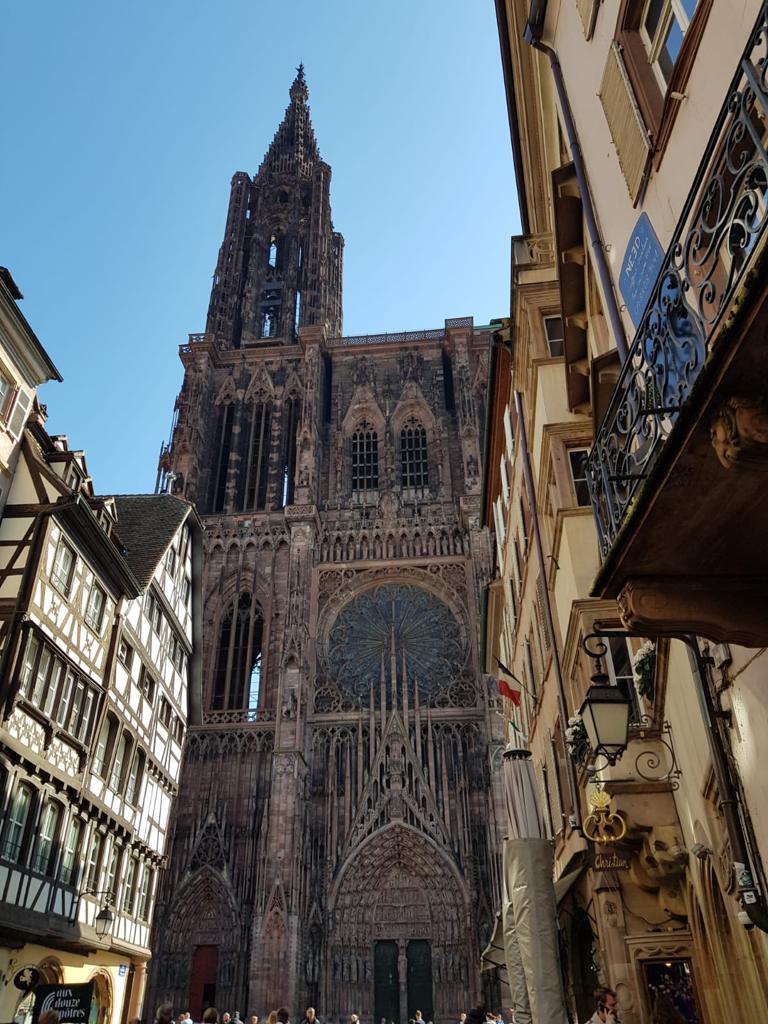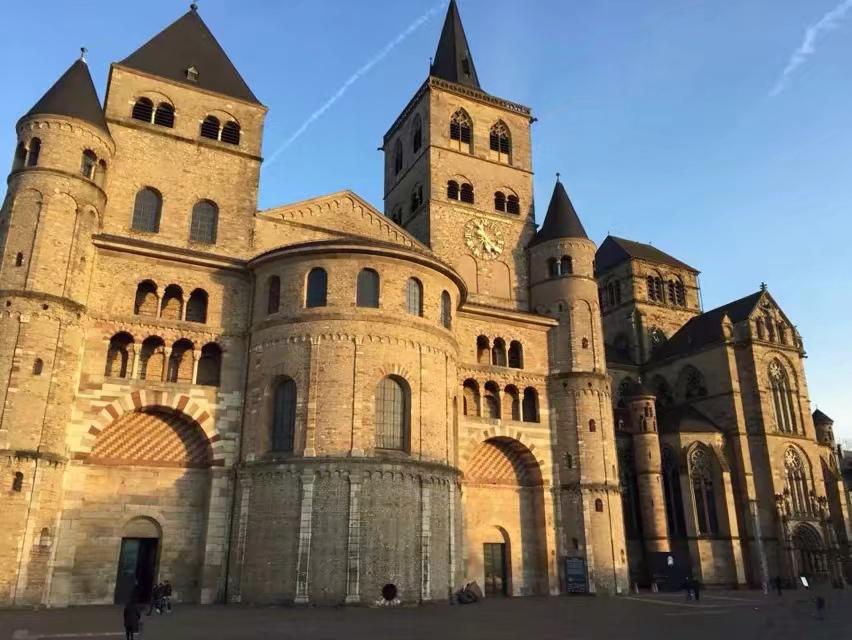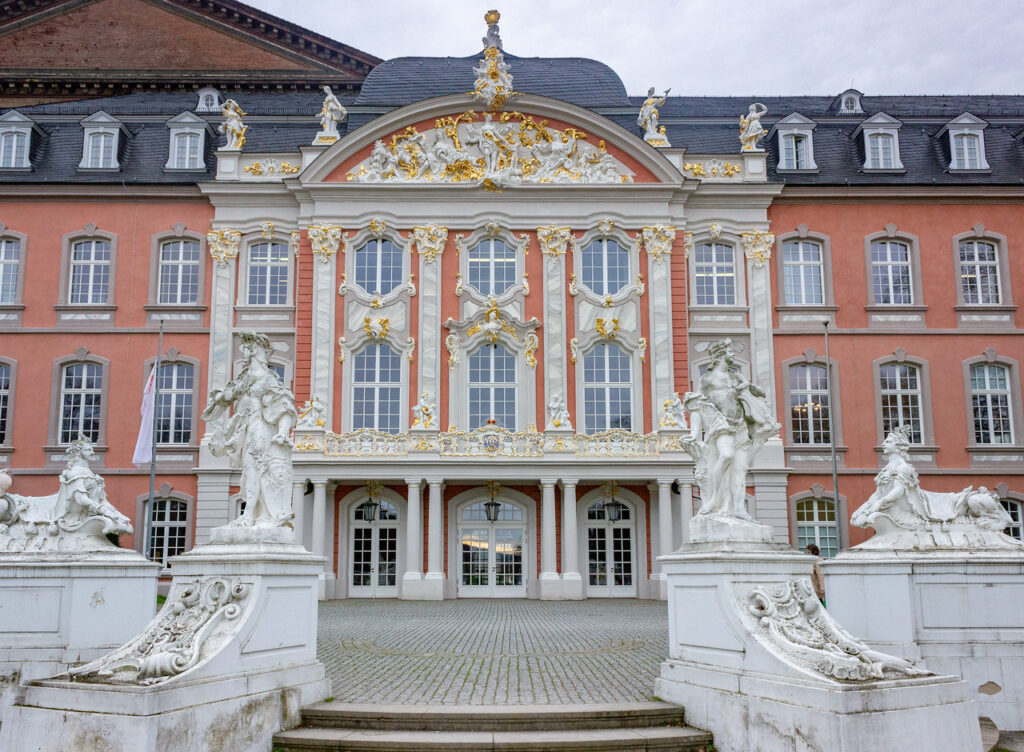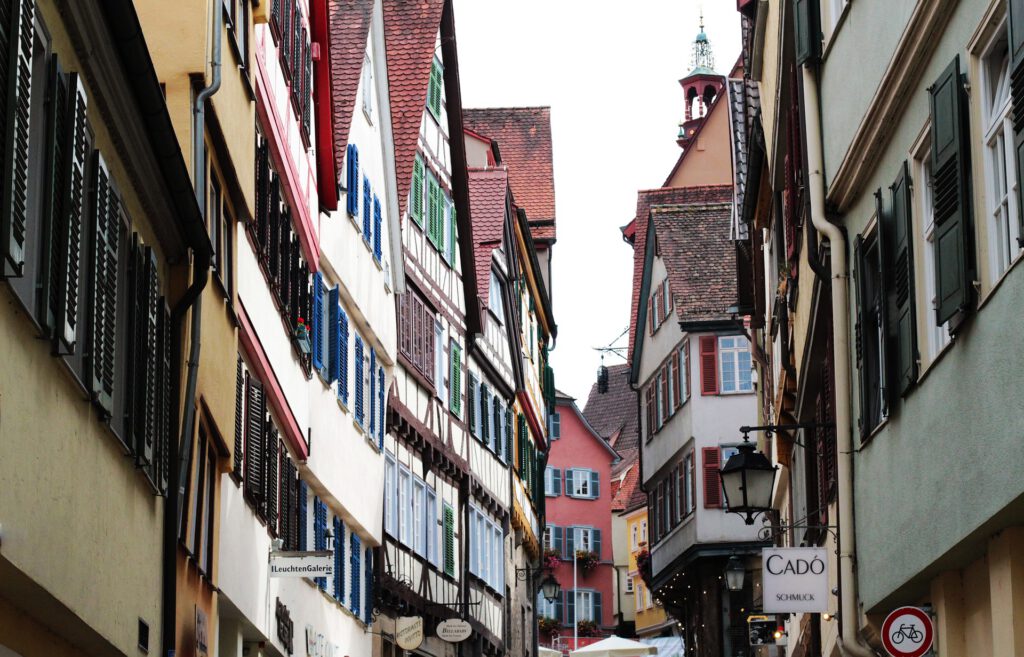This post is the third part of a three-post series on the in my opinion 50+ best day trips from Frankfurt.
In the first part, I focused on the best day trips from Frankfurt with destinations that can be reached within 1 hour.
The focus of the second part is my 23 personal best day trips from Frankfurt with destinations that can be reached within 1-2 hours by car.
Finally, this part will focus on the best day trips from Frankfurt with destinations that can be reached within 2-3 hours by car.
If you are planning to go on trips using public transport, make sure to also check out my post on public transport around Frankfurt.
The best day trips from Frankfurt (2-3 hours distance)
The third part has fewer places than the others as I think a place has to be quite nice to make the 2-3 hour drive each way worthwhile.
Just as in the other posts, the time estimations for distance by car are based on Google Maps estimations. Depending on where you start in Frankfurt, the real time needed can differ slightly.
The time estimations for distance by train are from Deutsche Bahn. They only include the time from Frankfurt central station to the central station of the destination. Keep in mind that sometimes the train station will be located at the edge of the city and you might still have to walk some distance to get to the main attractions.
Wissembourg

Distance by car
2:00 h
Distance by train
2:30 h
Personal Rating
Public transportation friendly
No
If you want to get a little bit of French flair but don’t want to travel to far, Wissembourg in Alsace is the place for you.
The most popular sight of Wissembourg is the Abbey Sts Peter and Paul, a picturesque gothic church. Another important hallmark of Wissembourg is the Maison du Sel, a house with an Alsatian pitched roof that was originally a hospital.
Baden-Baden

Distance by car
2:00 h
Distance by train
2:00 h
Personal Rating
Public transportation friendly
Yes
In the 19th century, Baden-Baden rose to fame as a popular spa town for European aristocrats. Most of what made Baden-Baden popular back then is still around to date.
The center of the town is the Kurhaus, a neoclassical building housing a famous casino. Another important landmark is the Trinkhalle which is located directly next to the Kurhaus. By the way, the Trinkhalle in Baden-Baden is something completely different from the Trinkhalle we know here in Frankfurt! At the Trinkhalle, you can actually drink the hot spa water for which Baden-Baden is so famous.

From the Kurhaus you can walk along a huge park surrounded by a small stream and posh looking luxury hotels all the way to Lichtenthal abbey.
If you enjoy panoramic views, you can take the funicular railway up Merkur mountain.
Rotenburg an der Fulda
Distance by car
2:00 h
Distance by train
2:30 h
Personal Rating
Public transportation friendly
Yes
Rotenburg an der Fulda is not very well known as a tourist destination. Yet, it has a very nice old town and a palace to offer. Especially the half-timbered houses directly at the Fulda make for gorgeous photos.
Hann. Münden

Distance by car
2:10 h
Distance by train
2:10 h
Personal Rating
Public transportation friendly
Yes
Hann. Münden is located at the confluence of the Fulda and the Werra. From here on, the combined stream is called Weser.
Hann. Münden has a beautiful old town with well restored half-timbered houses. But what makes Hann. Münden special is the “Weserrenaissance” buildings you can find here. The most prominent examples of “Weserrenaissance” in Hann. Münden are the old town hall and the Welfenschloss.
Bamberg

Distance by car
2:10 h
Distance by train
2:45 h
Personal Rating
Public transportation friendly
Yes
Bamberg is yet another German town whose old town is registered as a UNESCO world heritage site.
Bamberg was largely unaffected by the bombings in the World War II. There are more than 1200 historic monuments in its old town.
A special highlight of Bamberg is the city wall, the largest remaining city wall in all of Europe.
Another highlight is the old town hall, which is located on a small island in the Regnitz.
Bamberg has not only medieval style buildings but also a lot of well preserved Renaissance style buildings. The most notable among them is definitely the “Neue Residenz”, which was the seat of Bamberg’s Archbishops.

A little bit outside town, there is also Seehof palace. It used to be the summer residence of the Archbishops of Bamberg. Part of the buuilding is open to the public.
Strasbourg

Distance by car
2:15 h
Distance by train
2:00 h
Personal Rating
Public transportation friendly
Yes
Strasbourg is located just across the border from Germany and is the official seat of the European parliament.
The old center of Strasburg, Grande Île (Grand island) is a UNESCO world heritage site.

The old town of Strasbourg has so many sights that in this short excerpt I cannot do them all justice. One of the big highlights is definitely the gothic style Cathedral.

The most popular area is definitely the “Petite France” area, which contains numerous half-timbered houses, a weir and historic lock and the “Barrage Vauban”, a defensive structure and bridge spanning the Ill river.
Trier

Distance by car
2:15 h
Distance by train
3:20 h
Personal Rating
Public transportation friendly
Yes
Trier is considered to be the oldest city in Germany. It was founded by the Romans more than 2000 years ago.
With such a long history, the ages of sights in Trier range from the Roman era to the 18th century.

The most important sight of Trier is the Porta Nigra, a gate that was constructed in the 2nd century. Other sights from the Roman era include an amphitheatre and the ruins of several roman baths.
The main highlights from medieval times are the Cathedral and the “Hauptmarkt”, a central square surrounded by many medieval buildings.

Finally, the big highlights from the 17th and 18th century are the electoral palace and the Walderdorff palace.
Nürnberg

Distance by car
2:20 h
Distance by train
2:00 h
Personal Rating
Public transportation friendly
Yes
Nürnberg is best known for its Christmas market. But Nürnberg also has a lot to offer outside of Christmas season.

The highlight of Nürnberg is Nürnberg castle. The castle actually doesn’t consist of just a single building but instead of an entire group of buildings.

The medieval old town of Nürnberg was heavily affected by the World War II, but a foundation still remained and thanks to restoration it is now a major attraction again. There is a tour called “historical mile” which takes you around all of the most important sites of the Altstadt.
Erfurt

Distance by car
2:30 h
Distance by train
2:30h
Personal Rating
Public transportation friendly
Yes
Erfurt is the largest city in Thuringia. The city is well known for its well preserved medieval old town.
The icon of Erfurt is Krämer bridge. The bridge is the longest bridge in Europe with a closed front of half-timbered houses on both sides. In fact, if you don’t pay attention, you won’t even realise that you are actually crossing a bridge.

Another highlight of Erfurt is the Erfurt Cathedral. It is home to the largest, free swinging church bell in the world. Aside from the Cathedral, there is another highly significant religious building in Erfurt, the old synagogue. The oldest parts of the synagogue are from the 11th century. It is among the oldest well preserved synagogues in Europe.

Finally, there is Petersberg citadel. Petersberg citadel is a town fortress built on a hill. From there, you have a nice panoramic view of the medieval old town.
Coburg

Distance by car
2:30 h
Distance by train
3:00 h
Personal Rating
Public transportation friendly
Yes
Coburg was largely unaffected by the World War II. Therefore, many medieval buildings still remain.

The town is best known for Veste castle, which is located on a hill overlooking the city. It is among the largest, well preserved castles in Germany. The castle today contains a number of museums and is open to the public.
Another highlight of Coburg is Ehrenburg palace. The palace was originally a monastery and was transformed into a baroque style palace in the 17th century.
A little bit distant from the medieval center, there is another castle, Callenberg castle. The castle is located on a foresty hill in a suburb of Coburg. The castle is owned by the Saxe-Coburg and Gotha family but is open to the public and contains museums.
Weimar

Distance by car
2:35 h
Distance by train
2:45 h
Personal Rating
Public transportation friendly
Yes
Weimar is known as the center of German enlightenment and was the home of Goethe and Schiller.
The city has its own UNESCO world heritage site, Classical Weimar, which contains 11 locations.
Among the locations there are homes of Schiller and Goethe, but also no less than 5 (!!!) palaces.
Tübingen

Distance by car
2:40 h
Distance by train
3:10 h
Personal Rating
Public transportation friendly
Yes
The old town of Tübingen has only recently been put under monument protection.

The most famous snap of Tübingen is probably Höderlinturm, a yellow tower directly at the Neckar. In general, despite having many traditional half-timbered houses, the buildings in the old town of Tübingen are more colourful than in most other German old towns.
Another highlight is Hohentübingen palace, a mixture of medieval castle, palace and fortress. It today contains a museum of ancient history. From the castle, you have a great view on the city.
Metz

Distance by car
2:40 h
Distance by train
4:00 h
Personal Rating
Public transportation friendly
No
Metz is located at the confluence of two rivers, the Seille and the Moselle.
It has a rich cultural history and a large old town. The most iconic photo of Metz is probably of Temple Neuf, a protestant church located on an island in the Moselle.

Another important sight is Metz cathedral, which is famous for having the largest stained glass expanse in the world. Metz is also home to the oldest church in France, the Basilica of Saint-Pierre-aux-Nonnains. It was constructed in the 4th century and was part of a Roman spa complex.
Finally, in case you are arriving by train, the railway station is actually among the major sights. It is also referred to as the Station Palace. The reason for this is that the station features an exhibition of the apartments of the German Kaiser Wilhelm II.
Closing Remarks
This post concludes my three post series on the best day trips from Frankfurt. In the future, I might add detailed articles describing how to best visit some of the destinations, where to eat and in what order to see the sights.
If you feel like there is a place I left out or you would like me to write a detailed article on one of the places, just let me know!
And of course, if you enjoyed my list of best day trips from Frankfurt, please subscribe to my email list and follow on twitter, instagram and facebook!



